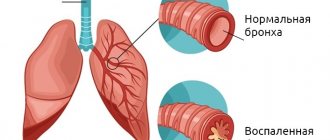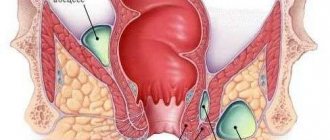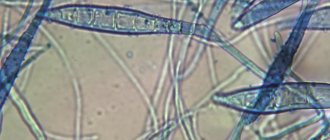What is a parasite?
The cucumber tapeworm belongs to a type of tape parasite that develops in the organs of the intestinal system. The worm is found extremely rarely in the human body, more often found in domestic animals. When introduced into human organs, tapeworm can cause a serious disease called dipylidia.
Photo of cucumber tapeworm to scale.
The tapeworm dipylidium caninum can survive in internal systems for no more than 12 months. Infection of a person occurs through the oral route through the accidental penetration of a flea infected with the infection, or through the saliva of a pet.
The disease occurs throughout the world; most often, cucumber tapeworm infestation is registered in the European part, China, Japan, Argentina, and the Philippines. The disease is especially common in young children who have direct interaction with animals. A high probability of infection occurs in dog kennels and places where animals walk. The peak incidence occurs in spring and summer.
Treatment of the parasite
The life cycle of a worm in the human body is only six months, after which time the worm dies and comes out without consequences for humans. Re-infection is only possible if a person ingests an infected flea again. Even if the parasite was not detected in time, you don’t have to worry about it harming the body. Most often, infection occurs accidentally and the person is completely unaware of it. After a certain time, the worm also dies quietly and is excreted from the body.
If you do find signs of a parasite in your body, and your suspicions have been confirmed by laboratory tests, your doctor may prescribe praziquantel or niclosamide to speed up the recovery process. Both drugs are taken once.
If cucumber tapeworm treatment is not carried out, it is still advisable to take the feces with fragments of the parasite for laboratory testing. In appearance, the segments are very similar to the body segments of a bovine or pork tapeworm, which are extremely dangerous to humans. For example, pork tapeworm can penetrate the brain and be fatal.
It is advisable to observe basic rules of personal hygiene during treatment, and also be sure to remove fleas from pets.
The structure of the cucumber tapeworm
Externally, the parasite is a gray-white or pink tapeworm. The length of the helminth varies from 20 to 70 cm, width - 3 mm. The worm consists of a proboscis and four suckers; on the scolex there are 8 rows of hooks, with the help of which the tapeworm adheres to the insides of the intestine. The neck of the tapeworm is thin, and small paired genital organs are located on the side of the joint. The developed segments of worms look like cucumber seeds, which is where the name of the parasite comes from. Inside the segments there are large cocoons with eggs, up to 0.05 mm in size, ranging from 8 to 21 pieces.
After the segments mature, eggs are released from them, which are passed along with the feces.
Cucumber tapeworm in humans, its biology, symptoms and treatment
The cucumber tapeworm, which parasitizes the intestines of humans, as well as carnivores and domestic animals, is a type of tapeworm.
Adults reach a length of up to half a meter, and are armed, that is, on the head (scolex), in addition to suckers, “for insurance,” there is a corolla of hooks.
With these hooks the parasite pierces the intestinal wall in order to hold on more firmly, and is additionally sucked on with suction cups.
I wonder where this name came from. The bovine tapeworm parasitizes inside cattle, the pork tapeworm spends part of its life course infecting pigs, and the liver fluke lives in the liver. It turns out that the cucumber tapeworm lives in cucumbers? Of course not.
It’s just that its mature segments, which detach from the strobila (torso) and come out with feces, are very reminiscent in shape of cucumber seeds. In the photo of a cucumber tapeworm in humans, which is on Wikipedia, they are clearly distinguishable. This is where the name came from.
And the disease itself is called dipylidia .
Parasite development cycle
Adult worms live in the intestines of dogs, cats, humans and some other carnivores. There they grow and secrete mature segments, which are excreted in the feces. Since the segments do not immediately release eggs, but are able to crawl for some time, they are noticed.
If the final owner is a dog or cat, then the segments can stick to the fur near the anus and crawl there. After a while it bursts and very small eggs come out.
Cats, being clean animals, after using the toilet, are able to spread these eggs through their fur. Sometimes they ask: is cucumber tapeworm in cats and dogs dangerous for humans? Yes and no.
The fact is that the eggs that are found on the fur of animals are not dangerous either to humans or to themselves. They are not capable of infection, since the cucumber tapeworm is a biohelminth. This means that an intermediate host is required for its development.
This owner is a flea. Some websites incorrectly write that fleas swallow eggs. This is incorrect, since the entire oral apparatus of a flea is “sharpened” for sucking blood.
- But fleas often lay eggs where they live, that is, on the owner’s fur.
- And there the flea larva eats the eggs of this tapeworm.
- After the larva turns into an adult insect, the flea will be infected, since inside it there will be an already germinated egg - an oncosphere.
- Now all that remains is for the cat to swallow a flea while washing itself; the oncosphere, once in the animal’s intestines, turns into an adult. The circle is closed.
It is very interesting that self-infection is possible in animals, but certainly with the participation of an intermediate host - a flea, or a lice eater. If your pets do not have fleas, then you and your children have nothing to fear.
It is much more difficult for a person to become infected than with other cestodiases (tapeworm infestations). For example, to “catch” bovine or pork tapeworm, you need to eat contaminated meat. And to get dipilidia, a person must swallow a flea. Agree, this is not given to everyone.
Therefore, a person is a “dead end” for this helminth, because the eggs need to get into the intestines of the flea larva. But with human feces this is impossible. The only exception is Mowgli, and if he defecated right in the wolf's den, he would be kicked out of the pack.
What happens after infection?
What symptoms does cucumber tapeworm cause in humans? After infection, the oncosphere enters the intestine, the scolex with hooks and suction cups turns out of it, and begins to grow. After a month, the adult helminth grows, reaching a size of about 60 cm.
Most often, a person does not have any symptoms of the disease . The only thing that can be noticed is the discharge of the joints with feces.
To treat or not to treat?
Another important feature of this helminthiasis in humans: the lifespan of this worm is six months. Therefore, a single individual dies on its own, and this is where the whole story with the disease ends.
And only if a person has the habit of swallowing fleas will the parasite appear again.
If cucumber tapeworm appears in a person, is treatment necessary? Since infection occurs accidentally, no treatment is required. The helminthic infestation goes away on its own.
But in order to be absolutely sure that this is exactly the rare type of helminth that does not require treatment, you need to collect the segments and take them for analysis. After all, it could be another helminth, for example, a dangerous pork tapeworm, which can parasitize the human brain.
Only in rare cases, in weakened subjects, there may be periodic abdominal pain, diarrhea, or itching in the anus, when the joints crawl out. As already mentioned, eggs that are excreted in feces and can end up on laundry are not visible to the naked eye and are not dangerous for humans, unless, of course, they are “eaten” by fleas.
In this case, you should definitely see a doctor. Your doctor may order a stool test, which may need to be done several times.
If there are still complaints and the diagnosis is confirmed, then this parasite very easily dies from one dose of biltricide (praziquantel) at a rate of 5-10 mg/kg body weight. There is no need to wait for him to come out. It will dissolve in the intestines and be safely digested.
About prevention
The most effective way is to worm your pets in a timely manner, as well as regularly check them for fleas, wash them with a special shampoo, and regularly shake out and wash their bedding. Wearing flea collars is also effective.
In conclusion, it must be said that the cucumber tapeworm, the symptoms in humans and the possible treatment of which we have described, is one of the most harmless helminths , and if all the other parasites were the same, then our life would be much easier.
Source: https://parazity.info/ogurechnyj-tsepen-u-cheloveka-ego-biologiya-simptomy-i-lechenie.html
Life cycle of a parasite
The life cycle of the helminth involves temporary carriers - fleas, as well as the main carriers - animals and humans.
Life cycle of a parasite.
Insect larvae feeding on waste can absorb mature segments of the parasite containing worm eggs. Penetrating into the larva, during the second month of life, the eggs form into a cocoon. Thus, when infected fleas are swallowed, animals become infected, and humans can become infected from pets.
Cucumber tapeworm in humans: photos, symptoms, routes of infection, diagnosis, treatment
Among the variety of tapeworms that often parasitize the human intestine, cucumber tapeworms are considered quite rare.
These parasites live in the small intestinal tissues of the gastrointestinal tract and more often infect pets than their owners. When the parasite larva enters the human body, it provokes the development of a rather dangerous parasitic infection - dipylidia.
The structure of the parasite
Cucumber tapeworm develops mainly in the bodies of domestic animals such as cats or dogs.
Humans are rarely affected by this parasite, but humans usually act as the parasite's final host.
- A tapeworm of this type reaches about 70 cm in length, and its width is only 3 mm.
- On the scolex, the parasite has 4 suckers and a proboscis, which has an 8-row arrangement of hooks.
- These hooks help the cucumber tapeworm to latch onto the intestinal lining.
This photo shows what cucumber tapeworm looks like in humans.
Sexually mature tapeworm segments, containing a huge number of cocoons with eggs, resemble cucumber seeds in appearance, which is why the parasite received such an unusual name.
Prevalence
The prevalence of cucumber tapeworm is not particularly widespread. This disease is very rare in humans.
The geographical prevalence is such that over the past few years, such a pathology has been recorded sporadically in the Krasnodar and Perm regions. The pathology mainly affects the child population, which is explained by the special love of children for pets.
Cucumber tapeworm infection does not differ in seasonality; however, it is more typical in the summer. Humans are not naturally susceptible to the parasite.
Routes of infection
The eggs of the parasite are released into the external environment only along with excrement. They then get caught in animal fur.
If one hair from the fur gets inside a person, then infection will not occur, but if a flea that is sick with a parasite and has larvae inside sits on the swallowed wool, dipylidiosis will begin to develop.
In such a case, the parasite, remaining inside the intestine for 20 days, develops to a sexually mature state, after which it begins to harm the body, provoking the appearance of a characteristic clinical picture.
How does infection occur?
Formed borage specimens located in the intestines of cats or dogs can be excreted in the feces, attached to the fur, or crawl out of the anus. Human infection can occur through contact with infected pets, but the development of the disease is extremely rare.
If you accidentally swallow an insect that has already formed larvae in its body, the likelihood of infection and the development of dipylidia increases. Thus, only if there are infected fleas in the internal systems of the animal can infection with human cucumber tapeworm occur.
Symptoms
Symptoms of cucumber tapeworm infection appear as it grows. Immediately after infection, a person may not feel any signs of the parasite in the body for a week. Then his health will begin to gradually deteriorate and become worse as the worm increases in size.
Because Since cucumber tapeworm lives in the intestines, most of the symptoms are associated with gastrointestinal problems:
- loss of appetite;
- loss of body weight, associated not only with loss of appetite, but also with the fact that parasites squeeze all the “juices” out of a person;
- abdominal pain, flatulence;
- nausea and vomiting;
- diarrhea;
- itching in the anus;
- the presence of white tapeworm cocoons in the feces;
- headaches, dizziness;
- increased salivation;
- pallor of the skin due to developing anemia;
- sleep disturbance, irritability.
Some people have very mild symptoms of dipylidia due to their high level of immunity. But if you experience any problems with the gastrointestinal tract, you should consult a doctor. The parasite must be expelled from the body in any case, because it will not leave the host on its own. The development cycle of the cucumber tapeworm can be repeated endlessly: it is able to separate segments containing larvae. And even when the adult dies, new parasites will hatch from the eggs.
Borage in animals
Most often, at the initial stage of the disease, significant manifestations do not occur in animals, and they do not show any signs other than excessive appetite. One of the signs of cucumber tapeworm infestation is the animal’s need to rub its anus on the ground: severe itching and painful sensations in the anus are usually observed when mature segments emerge. Externally, the segments are easily confused with fly larvae.
With a long course of the disease, the following symptoms occur, which may indicate helminthic infestation in dogs and cats:
- lethargy, lack of activity of the pet;
- change in color of mucous membranes and skin;
- purulent discharge from the eyes;
- painful stomach;
- stool disorder;
- convulsions;
- nausea and vomiting;
- excessive salivation;
- restless behavior;
- nervousness;
- weight loss.
Adult pets are more susceptible to the disease than kittens and puppies, whose infection can lead to death. The location of the parasite is the small intestine, from which the worm takes nutrients. If the disease is not treated, bleeding from the intestine, intestinal obstruction, volvulus, and severe allergic manifestations may occur.
The treatment uses drugs containing Praziquantel, sold in veterinary pharmacies. Most often, when removing cucumber tapeworm from the body, an integrated approach is used, which involves taking anthelmintics, regularly treating the fur with anti-flea agents, disinfecting the room in which the animal is located, as well as carrying out preventive measures.
The following medications are recommended for anthelmintic action:
- Fenasal;
- Febantel;
- Praziquantel;
- Azinox;
- Drontal plus;
- Mebendazole and others.
Drugs are added to food. The dosage is selected taking into account the body weight of the cat or dog. After 14 days, the course of therapy must be repeated.
Treatment of cucumber tapeworm
Treatment of dipylidia in cats (photo) is the same as in other animals. The pet must be given a drug that contains the substance praziquantel. These include:
In some cases, dipylidia is treated with drugs containing niclosamide:
- Fenagel.
- Fenasal in powder form.
Arecoline or Mebendazole can also be used to treat this disease.
How to take medications
Preparations with praziquantel . When treating with such drugs, the drug must be mixed with a small amount of food. The dosage is 1 mg of the drug per 1 kg of cat weight.
Mebendazole. If Mebendazole is used for treatment, the drug is given at the rate of 40 mg per 1 kg of weight. Mebendazole, like drugs containing praziquantel, is mixed with a small amount of food.
How does the parasite affect humans?
The disease does not pose a serious threat to humans. In most cases, dipylidia goes away without treatment. However, consequences can occur in the form of allergic reactions to the vital activity of the worm, manifested in the digestive organs. Often, complications that arise during the movement of the worm lead to metabolic disorders, damage to the mucous membrane of the gastrointestinal tract and intestinal walls.
Real sizes of cucumber tapeworm.
Allergic manifestations are expressed in the form of local itching, severe loss of strength, and anaphylactic shock. Such phenomena occur very rarely and mainly affect people prone to allergies.
If the disease persists for a long time, anemia can occur, which can seriously affect the body of children, the elderly, and those with immunodeficiency, which can be fatal.
Diagnostics
The purpose of diagnostic procedures is to differentiate borage from other parasites. Once the type of tapeworm is determined, appropriate treatment can be prescribed.
The main method for identifying borage infection is stool analysis . The latter is carried out by the Fulleborn method. To obtain an accurate result, the patient will have to donate stool several times, up to 3-4 times. This is due to the fact that borage segments are able to independently leave the feces. In addition, they are not released daily.
The degree of infection is determined by blood and urine tests.
Symptoms of parasite infection
Signs of infection with dipilidia may not have pronounced manifestations, since already formed larvae penetrate the human body. When infected, the following symptoms are observed, which develop as the worm develops:
- decreased appetite;
- gagging, nausea;
- excessive drooling;
- violation of bowel movements in the form of alternating constipation and diarrhea;
- flatulence, bloating;
- pain symptoms when pressing on the abdomen;
- blanching of the skin and mucous membranes;
- painful sensations in the head, dizziness;
- increased excitability;
- itching in the anus;
- weight loss.
In humans, as well as in animals, helminth segments can be found emerging from the anus along with feces.
Description of the parasite
The parasite got its name not because it lives on cucumbers. It’s just that the body of an adult individual consists of several links, each of which resembles the seeds of this vegetable. They are also similar to rice seeds, but the tapeworm was still called cucumber, and today this is the definition associated with it. The disease that the parasite provokes is called dipylidia (from the Latin name for tapeworm: Dipylidium caninum).
Life cycle and hosts
The cucumber tapeworm is a helminth from the class of tapeworms. Its life cycle begins from the moment a dog or cat defecates. Together with the feces, the segments (links) of the adult individual leave the body. They contain larvae that gradually destroy the shell and come out. Some of them die, and the other part is eaten by fleas that live in the fur of domestic animals.
The flea (dog lice eater) is an intermediate host of the cucumber tapeworm, necessary for the parasite to “transport” it into the animal or human body. The dog, trying to catch a flea, begins to bite the fur and accidentally swallows the insect. In the dog's body, the larva develops into an adult and the cycle begins again.
But sometimes a person can accidentally swallow a flea. Usually these are children who actively play with animals, including street ones. Adults who do not check their pets for fleas can also become infected. After all, many loving owners take their cat or dog with them to sleep. At night, a flea infected with cucumber tapeworm can easily jump into a person’s mouth.
Curious! If a person accidentally swallows cucumber tapeworm eggs, there may not be an infection, because eggs do not develop well in a mammal's body.
Damage area
Once in the human body, the cucumber tapeworm is fixed in the intestinal tract with the help of suction cups and gradually begins to grow. Just a month is enough for the larva to turn into an adult. The average length of the parasite is 20 cm, but there are cases when the tapeworm reached a length of 70 cm and even 1.5 m.
Diagnosis of infestation
Cucumber tapeworm can be detected in internal organs using the Fulleborn stool examination. This analysis is carried out more than once, since segments and eggs can be released periodically. The extent of the disease and possible health consequences are also determined.
Depending on the stage of the disease and complications, additional diagnostic methods may be required:
- biochemical blood examination;
- examination of the stomach and duodenal mucosa;
- if affected by several types of parasites, it is necessary to conduct a computed tomography scan.
After diagnosis, the doctor selects therapy, depending on the individual characteristics of the person.
Cucumber tapeworm in humans: causes, symptoms and treatment methods
The cucumber tapeworm (Dipylidium caninum) is a tapeworm, a parasite that infects the human small intestine and causes the development of a disease called dipylidia. The latter causes dysfunction of the digestive system, severe nervous exhaustion, and skin allergies.
What is cucumber tapeworm and why is it dangerous?
The cucumber tapeworm parasitizes domestic and wild carnivores, in rare cases infecting humans. It is characterized by a large length - reaches 20 cm , and with severe infection - 70 cm. A case has been recorded when the length of the worm reached 150 mm . Body diameter – 3 mm .
The parasite has a body consisting of the following parts:
- Scolex (head) , which is equipped with hooks. With them, borage makes punctures in the intestinal walls. Then, with the help of 4 suckers, also located on the head, the worm is attached to the intestines. Finally, the parasite has a proboscis through which it feeds.
- Strobili (torso) , which consists of many segments. They contain male and female sex hormones, so self-fertilization occurs. The cocoons with eggs contained in the segments resemble cucumber seeds in appearance, which is why the tapeworm got its name.
The lifespan of the worm is 6-12 months , after which it leaves the body naturally. However, during the period of “residence” in the intestines, the parasite becomes the cause of such health problems as:
- Duodenitis (inflammation of the walls) of the duodenum, which, in turn, provokes sudden and severe weight loss.
- Enteritis (inflammation in the small intestine)
- Pancreatitis (inflammatory process involving the pancreas)
- The occurrence of intestinal colic.
- Colitis (inflammation localized in the large intestine)
- Damage to all organs, which is caused by the transfer of pathogenic microorganisms by the worm.
- Allergic reactions.
- Decreased immunity, exhaustion of the body due to the fact that incoming nutrients are almost not absorbed by the intestines.
Life cycle and routes of infection
The life cycle of the worm lasts about a year and is carried out in the body of 2 hosts. The first is carnivores, usually cats and dogs. The worm matures and grows in the animal's intestines. At certain intervals, fertilization of the cell occurs in the segments of the tapeworm, after which it is excreted with feces.
Typically, these segments move with the animal on the surface of its fur until the egg shell breaks open. After its release, it is again fixed on the animal's fur. At this stage, tapeworm eggs are not dangerous to humans, even if he pets an infected animal, since the eggs are not yet ripe.
The next owner is a flea . The tapeworm larva cannot enter the stomach of an adult individual - the flea's trunk is not adapted for such a capture. The ingestion of borage eggs is carried out by flea larvae, which are deposited on the animal's fur.
By the time the flea “grows up,” an oncosphere—a viable borage seed—develops inside it. When a person swallows a flea, they become infected with the parasite. Fortunately, such situations are quite rare. Animals are usually susceptible to infection because, being flea-bearing, they swallow fleas when licking them.
So, the route of infection is from a carnivore when a person swallows cocoons with eggs that are “stored” in flea larvae. Incubation period is 20 days .
Symptoms
Damage to the body by borage is called dipylidia. The following symptoms are characteristic of this parasitic disease:
- Significant decrease in appetite, up to its complete absence.
- Sharp weight loss.
- Digestive problems, which manifest themselves as constipation, nausea and vomiting, and increased gas formation.
- Paleness of the skin and mucous membranes.
- Irritability, problems sleeping.
- Dizziness, headaches.
- Salivation.
- Anal itching; when examining stool with the naked eye, the presence of tapeworm segments is visible.
Depending on the general health of the patient, symptoms may be more or less severe.
Diagnostics
The purpose of diagnostic procedures is to differentiate borage from other parasites. Once the type of tapeworm is determined, appropriate treatment can be prescribed.
The main method for identifying borage infection is stool analysis . The latter is carried out by the Fulleborn method. To obtain an accurate result, the patient will have to donate stool several times, up to 3-4 times. This is due to the fact that borage segments are able to independently leave the feces. In addition, they are not released daily.
The degree of infection is determined by blood and urine tests.
Treatment
With the development of dipilidia, treatment is carried out in 2 directions:
- Specific, which involves taking medications that destroy and remove the tapeworm.
- Symptomatic, that is, aimed at eliminating individual signs of the disease.
Specific drug treatment is carried out with drugs such as Praziquantel or Phenasal . They are also suitable for getting rid of a number of other types of helminths, for example, roundworms.
The dosage is chosen by the doctor. Typically, adults are prescribed 60 mg of Praziquantel per 1 kg of weight. The resulting dosage is considered daily, exceeding which is not recommended. The duration of treatment with the drug is 2 days, which is enough to remove the helminth.
Fenasal (another name is Vermitin) is prescribed in combination with sodium bicarbonate. First, sodium bicarbonate is taken in a dosage of 2 mg, after 10 minutes - Vermitin.
During the treatment period, it is necessary to take stool tests several times to assess the dynamics. Treatment is considered effective if no new segments are detected.
Symptomatic therapy involves taking medications designed to eliminate the symptoms and consequences of dipilidia. Among them:
- Analgesics (No-spa) to relieve headaches and stomach pain.
- Probiotics, whose task is to normalize the intestinal microflora.
- Enzyme preparations (Creon)
- B vitamins, vitamin C, folic acid.
- If anemia develops, use iron-containing medications.
At the time of treatment, doctors recommend adhering to the principles of a healthy diet. You should increase your consumption of vegetables and fruits (natural sources of vitamins); buckwheat, beef, and veal will be beneficial.
Prevention
The risk of infection with cucumber tapeworm for humans, although small, does exist. Preventive measures will help avoid the development of dipylidia.
Firstly, you should take care of the health of your pets - regularly (every 4-6 months) give your pet medications for fleas and worms. If you suspect a parasite infection, contact a veterinary clinic.
Secondly, take care of personal hygiene – yours and your child’s. After contact with an animal, wash your hands, do not kiss pets, explain why contact with street dogs and cats is dangerous.
Source: https://parazits.ru/ogurechnyj-cepen-u-cheloveka-prichiny-simptomy-i-metody-lecheniya/
Treatment
Therapy for the tapeworm dipylidium caninum is based on the results of laboratory tests. Most often, it is enough to use the drug Praziquantel, which can destroy parasites without any consequences for the body. The dosage and course of treatment are selected depending on the patient’s age, body weight, duration of stay of the worm in the small intestine, as well as the patient’s tendency to allergic reactions. Cucumber tapeworm is grown at home.
The drug Fenasal can also be used, the effect of which is aimed at suppressing the vital activity of the helminth and removing it from the body. Often, improvement in well-being occurs within a day.
If the disease is accompanied by significant symptoms that worsen the patient’s general health, additional medications may be used:
- antispasmodics – no-spa;
- agents that suppress the production of stomach acid: Omeprazole, Pantoprazole;
- various enzymes to normalize the functioning of the pancreas: Creon, Panzinorm;
- preventive agents against dysbacteriosis: Bifidumbacterin;
- medications that help replenish iron deficiency: Sorbifer;
- additional consumption of B vitamins, folic acid;
- adherence to a certain diet, including fruits, vegetables, cereals, meat dishes from young veal.
Among the folk remedies, an enema with garlic is used, as well as drinking an infusion of tansy, which is an effective method of getting rid of all types of helminths. However, this treatment takes longer and should be discussed with your doctor.
Treatment of dipylidia
First of all, you need to make sure that an animal or person is infected with a cucumber tapeworm. Often suspicions arise when parasite eggs are detected in feces. In order to determine what type of helminths have settled in the intestines, it is necessary to take tests to the laboratory. A general or biochemical test of blood, urine or stool will do. The results will be ready in a few days. Once it becomes known that we are talking about cucumber tapeworm, you can begin to treat dipilidia.
Animal treatment
Treatment of cats and dogs consists of a set of measures, including taking medications, treatment for fleas and other parasites living in the fur, and diet. As a remedy for helminths, doctors most often prescribe drugs based on the active ingredient praziquantel. These include:
- Mebendazole. Added to food at the rate of 40 mg of medication per 1 kg of animal weight, 3 times a day for 3 days.
- Fenasal. It is convenient because it needs to be taken once, in a dosage of 0.2 g per 1 kg of dog weight. For a cat it is slightly less - 0.15 g per 1 kg of weight.
- Fenagel. It features a convenient paste form, but is intended only for treating dogs. It is necessary to mix the product with food, for example, with porridge, at the rate of 0.1 g per 1 kg of animal, and apply to the root of the tongue.
- Arecoline. A solution of a colorless and odorless substance in alcohol and water, which is also used exclusively for the treatment of dogs. Before starting the procedure, you must not give the animal food for 14 hours. After this, the medicine is mixed with milk or food, at the rate of 0.004 g per 1 kg of weight, and given to the dog. To prevent nausea, it is recommended to give the dog an aqueous solution of iodine (2 drops per 1 tablespoon of water) before doing this.
Treatment should be accompanied by disinfestation of the apartment, house or enclosure where the sick animal lives in order to avoid re-infection.
Cat treatment
Human treatment
Treatment of dipylidia in humans involves taking anti-helminth medications, which are effective against parasites of any kind. It is necessary to get acquainted with an example of treatment regimens with various means in order to determine the most suitable one in a particular case:
- Praziquantel. The course of treatment is 1-2 days, depending on the severity of symptoms and clinical picture. The dosage is calculated based on a person’s body weight, 60-70 mg per 1 kg.
- Fenasal or Vermitan. The entire contents of the package are diluted in 10 ml of boiling water, 100 ml of cool water is added to the resulting mass, mixed thoroughly and drunk in one serving. Before the procedure, the patient is recommended to take 2 g of sodium bicarbonate. The effect occurs after a single dose, this can be understood by the absence of helminth segments in the feces.
- Male fern extract in capsules. The drug was developed specifically to combat parasites; it must be taken very carefully, strictly following the instructions that come with each package. Taking pills requires preparation. For 2 days you need to eat only light foods that are easily digestible. At the end of the 2nd day, before going to bed, a saline laxative procedure is carried out, which is described in detail in the instructions. In the morning of the 3rd day, the patient is given a cleansing enema, after which he can begin taking capsules. Within half an hour you need to drink 1 tablet every 2-3 minutes. After 3 hours, you need to repeat the saline laxative, and in the evening go to the toilet. If the stool does not appear naturally, you will have to resort to an enema.
- Pumpkin seeds. They contain the substance cucurbitin, which is poisonous to parasites of any kind, which leads to instant death of the worms from intoxication and damage to the central nervous system. It is enough to eat 30-40 g of raw, roasted or dried seeds per day so that the parasites leave the body for a long time.
It is worth noting that treatment should be carried out under the supervision of a doctor. In order for it to be as effective as possible, it is recommended to remove parasites from all family members and animals if they live in the house.
Prognosis and possible complications
The consequences of the disease can manifest themselves in the form of damage to the human digestive system, which most often provokes some complications:
- inflammatory processes in the duodenum;
- gallbladder diseases;
- disorders of the pancreas;
- inflammatory processes in the small and large intestines;
- loss of body weight.
With a weak immune system, a person experiences:
- pancreatitis;
- colic in the intestines;
- colitis, enteritis.
- specific cholecystitis.
Also, cucumber tapeworm in the body can cause significant dehydration, disruption of the functioning of the gastrointestinal tract, and failure of intestinal absorption.
The prognosis for treatment of borage invasion is considered favorable.
Cucumber tapeworm in humans: symptoms, photos, development cycle and treatment – Website about osteochondrosis
Cestodes or cucumber tapeworms are tapeworms that parasitize the small intestine. As a rule, they are found in domestic animals, dogs or cats.
Once in the human body, cucumber tapeworm causes the pathology dipilidia, which disrupts the digestive system.
In this article we will tell you what cucumber tapeworm is, what its life cycle is and how infection occurs.
What is cucumber tapeworm?
It is generally accepted that the cucumber tapeworm is a dog helminth or pumpkin tapeworm, which belongs to the class of tapeworms that provoke the pathology dipylidia. The length of an adult individual can reach up to 70 cm, and the width of the parasite reaches 3 mm.
There are four suckers and a small proboscis on the head. There are hooks attached to the front of the head, with the help of which the worm is attached to the walls of its host. Ripe segments of the cucumber tapeworm resemble cucumber seeds, from which the worm got its name.
What a pumpkin tapeworm looks like is shown in the photo
For information! Tapeworms can actively multiply in the body and not appear for a long time.
Each segment contains small cocoons, inside which eggs up to 0.05 mm develop. Then they go outside, where they behave like a completely independent organism.
Life cycle
The entry of segments into the external environment is the beginning of the life cycle of worms. They come out with the help of feces, the egg shell is destroyed, some of them die, the second part is swallowed by an intermediate carrier, for example, fleas. The permanent carriers are dogs or cats. The photo shows a complete diagram of the life cycle of the cucumber tapeworm.
For information! Animal nurseries are the most dangerous place where there is a small percentage of borage eggs being transmitted to the human body. As a rule, they infect children under 10 years of age.
When the larva enters the body, it begins its development and reaches the form of a cysticercoid. The definitive carriers are dogs, wolves, raccoons, cats or foxes. After penetration, the worms try to cling tightly to the walls of the small intestine, and after 20 days the sexually mature stage begins, where:
- clinical manifestations of pathology increase;
- tapeworm exhibits its pathogenic properties.
How does a person become infected?
The spread of tapeworm is classified as widespread, where places with large concentrations of animals (domestic, wild) are particularly dangerous.
According to statistics, infected dogs or cats pose a constant threat of infection, regardless of the age category of the person. During the process of defecation, the segments of the parasite come out and begin to spread egg capsules with new parasites.
Such capsules can remain on the pet's fur, however, even if a person pets the animal, this is unlikely to lead to infection.
For information! Cucumber tapeworm has been encountered in humans only 16 times over the past 20 years, and then mainly in children.
Human infection can occur if an insect swallows a tapeworm egg, as a result of which a larva begins to develop inside their body.
If such a flea gets on a person’s body and bites him, then there is a chance of becoming infected with a helminth. You can also become infected by swallowing such a flea, animal saliva, or eating dirty food.
Why are children most often infected with helminths? This is due to closer contact between children and pets.
Symptoms and first signs of dipilidia
Infectious disease specialists note that the development of pathology in adults occurs without symptoms with a hidden or blurred clinical picture. But in children, the body is significantly sensitive to parasites, so clear signs of pathology appear more often in children than in adults. As a rule, when a cucumber tapeworm is infected, a child may experience the following symptoms:
- sudden weight loss;
- increased nervousness;
- loss of orientation;
- pallor of the epidermis;
- diarrhea;
- frequent urge to vomit;
- decreased appetite;
- increased salivation;
- attacks of pain in the abdominal area.
For information! Pumpkin tapeworm can cause severe itching in the anus at night.
The presence of small white worms can be observed in the feces; this process indicates the rapid development of helminthiasis. If dipilidia is completely ignored, the following may occur:
- attacks of colic;
- defeat of the biliary chronic form;
- inflammation of pancreatic tissue;
- inflammation in the small and large intestines.
When you first notice any symptoms of the disease, it is recommended to contact an infectious disease specialist for laboratory testing.
Treatment of cucumber tapeworm
If a tapeworm is detected, treatment is carried out at home; as a rule, medications are used in combination with traditional medicine. Absolutely all therapeutic measures are carried out under the supervision of the attending physician. If dipilidia leads to the development of a severe form of pathology, hospitalization may be necessary. The duration of therapy and dosage is calculated based on:
- age category of the patient;
- body weight;
- intensity of pathology symptoms;
- characteristics of the body.
It is not recommended to increase the dosage or carry out independent treatment; such measures can only worsen the health condition.
Drugs
To eliminate symptoms and pathology, anthelmintic drugs are used. The most effective ones include:
- Prazinquatel is a drug that can increase the permeability of the parasite’s cell membrane, as a result of which its muscles are destroyed and spastic paralysis occurs. The worms die and are expelled during defecation.
It is recommended to take the tablets 3 times within one day. It is not recommended to increase the dose, because can cause side effects in the form of elevated body temperature, allergic reaction, dizziness.
For information! If the patient has anemia, he is recommended to take vitamin B12 in the form of injections.
- Fenasal - this remedy is considered the safest for the human body; its active substances cause the death of tapeworms. The principle of action of the drug is the same as that of all anthelmintic drugs.
Important! Fenasal has virtually no strong side effects, so it can be taken even during pregnancy in the 2nd and 3rd trimesters.
The drug destroys the resistance of worms to digestive enzymes, as a result of which the worms are simply digested like a regular product.
Folk remedies for dipylidia
Pumpkin tapeworm can be eliminated by consuming certain products, however, their effect can only be achieved if dipylidia is in the initial stage of development. As a rule, the diet includes the following products:
- sauerkraut;
- carrot;
- beet;
- radish;
- pomegranate;
- garlic;
- green or onions; pumpkin seeds.
For information! Infusions of tansy mixed with a small amount of refined oil and pumpkin seeds are effective.
- You can learn more about how to treat worms in children and adults from the video.
- It is worth noting that before choosing a method of treatment for dipylidia, it is recommended to undergo a laboratory test and consult with your doctor.
Cucumber tapeworm parasite: symptoms and treatment
The cucumber tapeworm is a parasite related to tapeworms, the result of which is dipylidia. The ideal habitat for adult individuals is the body of dogs and cats, but there are cases when they are found in people. Often, helminths affect children's bodies because they spend a lot of time with their pets.
Characteristics of the helminth
An adult worm is a long, thin specimen, reaching up to 70 cm in length and 3 mm in width. The head consists of a proboscis, suckers and hooks with which it clings to the intestinal walls.
The body of the parasite is covered with segments resembling cucumber seeds, which gave rise to the name of the helminth. Each of them contains cocoons in which helminth eggs develop.
The number of the latter can reach from 8 to 21 pieces in one capsule.
Mature segments, which are also called proglottids, are separated from the body of the worm and leave the animal or human body during bowel movements. At this point, the life cycle of the cucumber tapeworm begins.
After this, the shell of the active segments is destroyed, helminth eggs enter the environment, then into the body of fleas and lice eaters, where the larval stage of tapeworm formation begins.
The cucumber tapeworm lives in the body of a flea for 18-30 days.
Cucumber tapeworm
The ultimate goal of the helminth is to live in the intestines of animals of the canine family, which include domestic and yard dogs, foxes, wolves, and raccoons. They are called the definitive host of the parasite. Sometimes cats play his role, less often people. Intermediate hosts of helminths are fleas and dog lice eaters.
The cucumber tapeworm enters the body of animals through wool, water or food that contains infected insects. The goal has been achieved, the helminth has entered the body of the main host, where it instantly clings to the intestinal walls, and after a day it turns into a sexually mature individual capable of producing offspring.
Signs of dipylidia
A single representative of the cucumber tapeworm in the intestines is not dangerous to humans and animals. It does not cause any unpleasant sensations to its owner, therefore, at the initial stage, dipylidiosis is asymptomatic. Signs of the disease begin to appear in the event of a massive accumulation of parasites. It is worth separately studying the symptoms of intestinal helminth damage in animals and in humans.
Source: https://xn--3-7sbdco5a0agkeii9o.xn--p1ai/narodnoe-lechenie/ogurechnyj-tsepen-u-cheloveka-simptomy-foto-tsikl-razvitiya-i-lechenie.html
Prevention
To avoid infection, the following recommendations should be followed:
- when living together with pets, regularly provide care, exterminate parasites and fleas, bathe pets, and show them to a veterinarian;
- get the necessary vaccinations in a timely manner;
- Maintain basic hygiene; be sure to wash your hands after interacting with animals;
- avoid direct contact of children with cats and dogs;
- avoid stray animals;
- regularly disinfect your home.
Despite the fact that the cucumber tapeworm is an infrequent guest in the human body, the consequences of dipylidia can be unexpected. To prevent the development of the disease, you should maintain personal hygiene and regularly examine your pets.
Route of entry into the human body
Cucumber tapeworm is a very common parasite among pets, and dogs and cats are especially susceptible to it.
Cats and dogs are most susceptible to the parasite.
In rare cases, helminths reach a person, whose body is an intermediate link in the life cycle of cestodes, but plays the same role for them as an animal.
When the segments leave the host’s body with feces, the shell that contains the eggs is destroyed and they end up outside. Eggs can end up on the body of a dog or cat, on the bedding, or on the floor. After which they are swallowed by fleas or lice eaters.
Human infection occurs in several ways:
- accidental ingestion of a pet flea;
- transmission of larvae through saliva from a dog or cat;
- eating contaminated foods, for example, when they get animal hair.
Young children who maintain close contact with animals are at risk. This is why it is very important to treat your pets promptly to eliminate parasites and fleas. Adults and those who do not frequently come into contact with animals become infected much less frequently, since once in the external environment, borage eggs remain viable for no more than 2 days.
Once in the body, the tapeworm larva quickly attaches to the wall of the small intestine, where it parasitizes until it becomes an adult worm. Typically this life cycle period is about 30 days. Then the process is repeated, as in animals: segments with eggs are released with feces into the external environment.
Treatment measures
The risk of catching cucumber tapeworm always exists, since its carriers are homeless animals that live in abundance around garbage cans.
Domestic cats, which are let out to walk by their “caring” owners, are most at risk. Much has been said about the fact that the street is a source of increased danger for stray pets, but well-fed and well-groomed cats can still be found in the company of dumpster regulars. Every time a cat comes home, it brings a bunch of infections to other pets and its owners.
To protect yourself and your tailed zoo from helminths, it is recommended:
- periodically check the fur of pets for the presence of fleas, and if found, fight them until complete victory;
- provide pets with anti-flea collars or periodically bathe them with preventative pet shampoo;
- wash or wipe your shoes every time after returning from the street;
- maintain cleanliness and order in the home;
- ensure proper hygiene of bowls and trays for animals, including their periodic treatment with household antiseptics;
- exclude unfrozen meat, stale food, unwashed vegetables and fruits from your pet’s diet;
- periodically give your animals antihelminthic drugs: for those visiting the street - every 6 months, for homebodies - once a year;
- wipe the floor, upholstered furniture, window sills and other surfaces where furry pets like to sit with disinfectant solutions;
- Do not forget about the prevention of helminthic infections in family members, because an infected person is a source of infection for others.
If you suspect helminthiasis in a cat or other domestic animals, you should seek help from a veterinary clinic.
Regular preventive measures can prevent tapeworm infections. Following simple recommendations will improve the health of your four-legged friend:
- Control fleas;
- Maintain your hygiene;
- Visit your veterinarian regularly;
- Do not walk around the apartment in dirty shoes;
- Periodically treat animals with anthelmintic drugs for preventive purposes.
https://www.youtube.com/watch?v=fZZWjSQzWaM
Fleas not only cause itching and irritation, but also carry helminths. During the process of washing, the cat can swallow a flea, after which a cucumber tapeworm infection will occur.
A flea collar will be your surefire remedy in the fight against tapeworms. If there are a large number of fleas on your pet's fur, then before putting on the collar, give him a bath.
There is a wide range of anti-flea shampoos that work great.
Do wet cleaning regularly and keep your home clean. Flea eggs can remain in carpets, pillows, and on the seats of upholstered furniture. Use a vacuum cleaner when cleaning and keep upholstered furniture clean.
It is unlikely that it will be possible to completely protect a cat from worms, but the risk of infection can be reduced. To do this you need to follow several rules:
- carry out regular deworming;
- visit the veterinarian once every three months;
- remove, if possible, all sources of infection from the home;
- monitor your cat’s diet and do not give it raw foods;
- limit your pet’s interaction with other animals and rodents;
- treat your pet for fleas in a timely manner;
- Carry out regular cleaning and disinfection of cat things.
We suggest you read: How to accustom a kitten or an adult cat to a scratching post
To prevent a person from becoming infected with helminths from a cat, there are also a number of rules:
- Wash your hands after each contact with the cat, before eating and after using the toilet;
- From an early age, children should be taught personal hygiene;
- do not allow the cat to sleep in the same bed with people;
- do not kiss your pet;
- thoroughly clean the cat's litter box, be sure to do this with gloves;
- do not accustom your cat to raw food;
- do not touch stray animals.
There are many types of worms, each of which has an adverse effect on the cat's body, but in general they can be gotten rid of without depressing consequences. The main thing is to notice the symptoms of infection in time and begin treatment.
The veterinarian selects treatment based on symptoms, severity of the disease, concomitant infections and the cat’s individual characteristics. It is important to follow all recommendations regarding medications and dosages.
In the fight against cucumber tapeworm, drugs containing praziquantel or niclosamide are effective. Medicines based on mebendazole are used less frequently. Praziquantel is dosed at the rate of 5 mg per kilogram of cat body weight. take 40 mg per kilogram, adding it to the feed.
The basis of which is niclosamide, it is added to food - for cats, 0.15 g per kilogram of weight is calculated. There is no need for preliminary fasting. Phenagep (niclosamide) comes in the form of a paste in a tube. For cats, a dosage of less than 0.1 g per kilogram of weight is selected. A small amount of the medicine is mixed with food and placed in the cat's mouth, forcing him to swallow the paste.
Bunadimine is used in anthelmintic therapy to treat domestic animals - dogs and cats. The dosage used is 30 mg per kilogram of pet’s body weight. Previously, the animal is kept in hunger for three hours.
Antibacterial agents are used to combat pathogens. In combination, medications are prescribed that help restore damage to the mucous surface of internal organs susceptible to infection by helminths. In case of severe dehydration or critical weight loss, an IV may be used.
Treatment methods
Therapy for invasion includes two directions - symptomatic and specific. Symptomatic treatment involves taking several types of drugs:
- Antispasmodics. These remedies relieve pain.
- Enzymes. Help the digestive system cope with the breakdown and processing of food.
- Probiotics. Replaces intestinal microflora with beneficial bacteria.
- Folic, ascorbic acid, B vitamins. Help increase the body's resistance and speed up recovery.
Specific treatment is aimed at eliminating the parasite. The following means are used:
- Preparations based on praziquantel (Drontal, Kanikquantel plus, Quantum). This substance instantly increases the permeability of parasite cell membranes, which leads to their paralysis and death. In addition, praziquantel damages the epithelium of the worms and helps the animal's immune cells cope with them.
- Medicines with niclosamide - Fenagel or Fenasal. These drugs are only effective against tapeworms. After taking Niclosamide, it is recommended to give the animal a laxative.
- Your veterinarian may prescribe mebendazole-based medications.
- Bunamidine is a substance that enhances intestinal peristaltic function, which helps get rid of the parasite faster.
- Antibiotics are prescribed that eliminate pathogenic microflora, since the waste products of the cucumber tapeworm provoke its growth.











